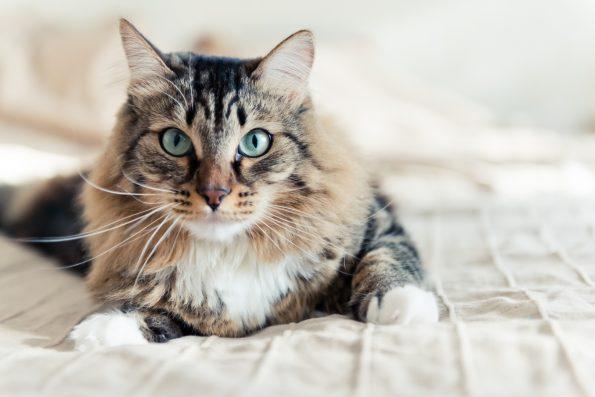New Research Revealed That Cats Actually Make Close To 300 Unique Facial Expressions, Using These Slight Movements As Signals To Communicate With Each Other

Cats often get labeled as distant or less expressive, especially when you stack them up against dogs.
They’re usually more understated in showing their feelings—think a small twitch of an ear or a gentle nudge of their whiskers. There hasn’t been a lot of research diving into the enigmatic world of cat emotions, either.
However, a recent study revealed a new side to the story. Scientists have identified close to 300 unique facial expressions that cats use to send signals to each other.
To gather information on the study’s feline participants, Lauren Scott, a researcher from the University of Kansas Medical Center, spent about a year at a cat cafe in Los Angeles, capturing video of 53 domestic shorthair cats in action. This group, which included both male and female adults, was the focus of her study.
Scott managed to compile 194 minutes of cat-centric video, documenting 186 separate interactions. Alongside her colleague Brittany N. Florkiewicz, an evolutionary psychologist from Lyon College, Scott was able to meticulously examine the facial cues of these cats.
Together, Scott and Florkiewicz identified 276 expressions that were a mix of 26 different facial movements, such as changes in the position of the ears, blinking, nose licking, and movements of the whiskers and mouth. For a bit of context, humans are known to have around 44 facial movements, while dogs display 27.
Out of all the expressions cataloged, about 45 percent, or 126, were deemed friendly, 37 percent were seen as aggressive, and 18 percent remained unclear in intent.
“These findings show it is good to look at a cat’s ears, eyes, and whiskers to understand if they are feeling friendly,” Florkiewicz explained.
“Their mouth provides a lot of information about whether a catfight is likely. People may think that cats’ facial expressions are all about warning other cats and people off, but this shows just how social and tolerant pet cats can actually be.”

Valeri Luzina – stock.adobe.com – illustrative purposes only, not the actual cat
Furthermore, the researchers pinpointed what they call a “common play face” in cats, marked by a relaxed jaw and the mouth corners pulled back. This kind of expression is something humans, dogs, and monkeys also exhibit when they’re playing.
And although the study illuminates aspects of feline emotions and behavior, the precise meaning behind each expression still remains a mystery. So, Florkiewicz believes that unraveling these meanings could be an exciting direction for subsequent research.
However, the researchers did notice certain patterns of behavior. For instance, cats usually point their ears and whiskers forward in amiable exchanges and backward in negative ones. They also observed that cats often squinted their eyes and pinned their ears back during aggressive encounters.
According to Florkiewicz, this recent research could assist potential cat owners in selecting a new cat that might mesh well with pets they already have at home, or it could simply help cat owners better understand their furry friends.
There’s even the potential for this knowledge to fuel the development of an app that translates cat expressions. Right now, there’s already corporate interest in such technology.
“Our study demonstrates that cat communication is more complex than previously assumed. Our hope is to expand our sample size to include cats living in other locations… looking at the facial expressions of cats living in multi-cat homes, feral colonies,” Florkiewicz concluded.
To read the study’s complete findings, which have since been published in Behavioral Processes, visit the link here.
If true crime defines your free time, this is for you: join Chip Chick’s True Crime Tribe
It Turns Out That Her Boyfriend Is Married, And She Also Suspects He Has A Son
Sign up for Chip Chick’s newsletter and get stories like this delivered to your inbox.
More About:Science